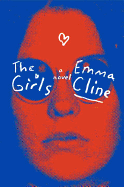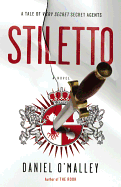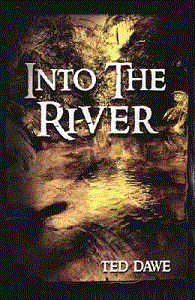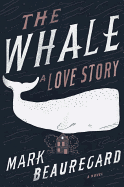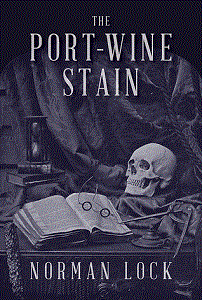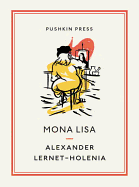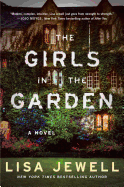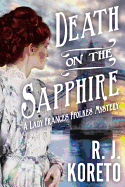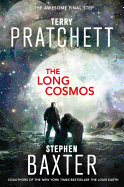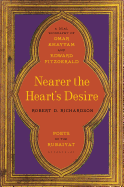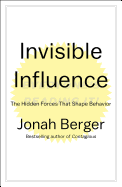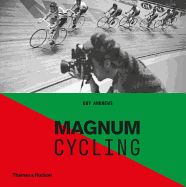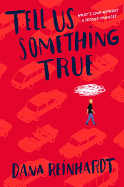Friday, June 17, 2016
"I am much too short to be the heroine of this story." --Hazel Wong
It's just a few steps from the cozy-dangerous boarding school of Harry Potter to the cozy-dangerous drawing rooms of classic British murder mysteries, via the witty, thoughtfully plotted middle-grade Wells & Wong novels. Robin Stevens's series, originally published in England, follows the two brightest students of Deepdean, an isolated 1930s girls' school.
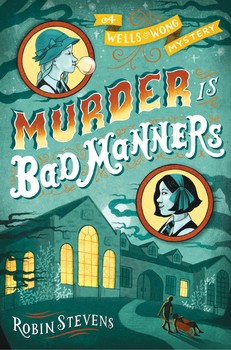 |
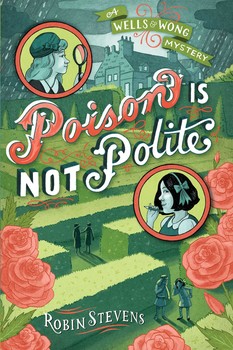 |
The first two books, Murder Most Unladylike and Arsenic for Tea, have been released in the United States by Simon & Schuster with some light vocabulary changes for an American audience--they've been re-titled Murder Is Bad Manners and Poison Is Not Polite, respectively--and the U.S. versions retain their agreeable British flavor.
Daisy Wells, the 13-year-old self-appointed president of the Wells and Wong Detective Society, takes the Sherlock Holmes role, chasing her cases "like a dog after a rabbit" and, she claims, the pure facts. But narrator Hazel Wong is often just as keen an observer, and she never loses sight of death's awful emotional costs.
Wong comes from Hong Kong, and she brings a welcome perspective as an outsider explaining the quirks of boarding-school life, such as the importance of "bunbreak" and of sometimes failing at lessons so as not to be a "swot." She's also frank about the difficulties of being best friends with the tall, blonde and beautiful Daisy, something many junior-high girls will identify with.
Though solving the crime is always the bottom line, Stevens's books satisfyingly explore the forging of a friendship between the two girls, and quietly make the point that adulthood involves facing uncomfortable facts. Even if you're an adult fan of classic mysteries, these lightly gruesome tales are highly enjoyable bunbreak reading. --Ali Davis, freelance writer and playwright
The Girls
by Emma Cline
On first inspection, Evie Boyd could be anyone--a stringy-haired ex-hippie at the grocery store, standing next to the beer case. But her blankness belies an acid-tinged history in an infamous, murderous Northern California cult. As with much of The Girls, things are not what they appear.
Emma Cline's breathless, near-perfect debut begs to be fallen into headlong, like an ill-fated love affair. From page one, when Evie describes her first encounter with the titular girls, the female cult followers who are the group's allure, the novel becomes a compulsive read, with the sort of page turning one often associates with pulpy paperbacks. Flashing between the past (1969) and the near-present, Cline writes beautifully of Evie's immersion, tracing her path from discontented suburban 14-year-old to the cusp of womanhood and wickedness, infusing the story with her own ambiguity. Between sexual awakenings and a newfound feeling of belonging, there are the less savory elements of culthood, all rendered in Cline's unflinching and engaging style.
There is little to say of the plot without revealing the answers to questions deep within the novel, the unknowns that propel it at breakneck speed. Like the charismatic cult at the center of the story, The Girls is the rare book whose magnetism casts a reckless and irresistible spell. --Linnie Greene, freelance writer
Discover: The Girls chronicles a teen girl's ill-fated liaison with an infamous, murderous cult in late 1960s Northern California.
Stiletto
by Daniel O'Malley
Daniel O'Malley (The Rook) expands on the intriguing and hilarious paranormal world of the Checquy, Great Britain's ultra-secret espionage and law enforcement agency for supernatural matters. In a devilishly funny follow-up, Stiletto, he leads readers into the ranks of the Checquy's mortal-enemies-turned-recent-allies, the Grafters, a Belgian society of scientists who make Victor Frankenstein look unimaginative.
Rook Myfanwy Thomas, a key member of the Court of the Checquy, could go down in history for the ceasefire with the Grafters--if she can keep the two sides from poisoning, dismembering or liquefying each other. Each Checquy member became an agent thanks to a supernatural talent; each also received rigorous combat training from a very young age. The Grafters possess physical modifications perfected through countless surgeries and technological innovations.
Bridging the gap will fall to Odette Leliefeld, and her assigned Checquy minder, Pawn Felicity Clements, whose power is psychometry. Despite their mutual disgust and suspicion, the two brilliant young women must pull together in the face of fatal, seemingly Grafter-originated attacks on the Checquy that threaten the negotiations.
While not without flaws--namely, a slightly bloated plot and not enough Myfanwy--and possessed of a steep learning curve for the uninitiated, this sequel delivers the imagination, action and sardonic wit of its predecessor in spades. O'Malley reaches new heights of grotesquery in the best possible way with details of the Grafters' lives. This ambitious romp reads like X-Men meets Supernatural as narrated by Jasper Fforde, only funnier. Readers should begin with the first book, then approach this one ready to meet some wisecracking, butt-kicking additions to a stellar character roster. --Jaclyn Fulwood, blogger at Infinite Reads
Discover: Daniel O'Malley raises the action, monsters and witticisms to new levels in this sequel to The Rook.
The Whale: A Love Story
by Mark Beauregard
In 1850, Herman Melville was in debt and struggling professionally, particularly with the novel-in-progress he was then calling The Whale. That summer, on a family trip to the Berkshires, he met the older, successful author Nathaniel Hawthorne, and began a relationship that would be passionate and painful, fraught and inspirational. Mark Beauregard explores the intimate friendship between these two literary legends in The Whale: A Love Story.
Based on primary sources including letters and journals, and meticulously researched, this novelization follows the historical record closely, as detailed in an epilogue. Hawthorne's letters to Melville, lost to history, are re-created here using his other letters and journal entries; Melville's letters to Hawthorne, however, are reprinted faithfully (with few, documented exceptions). Melville dives deeper into debt to move to the Berkshires and be near Hawthorne. As they discuss cerebral, spiritual and literary matters, grow close and suffer estrangements, Beauregard charts a full-blown love affair. In this telling, Moby-Dick is a labor of love and obsession directed not at a whale but at a man. Melville's novel (which was dedicated to Hawthorne) continues to compel and confound readers today, and The Whale: A Love Story offers one possible explanation for its tortured mysteries.
In Beauregard's fittingly emotive account, Melville is preoccupied and fervent, and Hawthorne is changeable, by turns sensitive and cool. Set against a literary community that helped define American letters of the time, this high-spirited story evokes a singular relationship and the complexity of Moby-Dick. --Julia Jenkins, librarian and blogger at pagesofjulia
Discover: Careful research supports this story of a love affair between Hawthorne and Melville that birthed a classic.
The Port-Wine Stain
by Norman Lock
Despite its short length, Norman Lock's The Port-Wine Stain is a powerfully complex novel told in interwoven layers of theme and plot. Written in approachable prose, it opens near the end of the 19th century, in the Philadelphia office where Edward Fenzil practices medicine, fascinated with the more macabre side of human anatomy. But no matter how many bodies he performs surgery on, he can never quite find the part of the soul that leads a man to evil. When a friend comes to visit, Fenzil indulges the man, who never speaks, in a story from his days as a medical assistant, when he got to know the city and became personally acquainted with Edgar Allan Poe. Slowly, Fenzil loses his grip on reality, culminating in a terrifying late-night encounter with a mysterious creature in a morgue.
Thus, The Port-Wine Stain itself begins to read like a Poe horror story. As Fenzil tries to figure out what is real in a world he becomes convinced is inhabited by ghosts and doppelgängers, Lock slowly eases the narrative beyond the doctor's tale and into Poe's territory of psychological trickery. Every scene recalls the question Fenzil asks himself about the nature of evil in man.
The third in a series Lock has called "The American Novels," The Port-Wine Stain fits perfectly with the previous two: The Boy in His Winter and American Meteor. By picking a moment in U.S. history and inhabiting it with the real-life characters that defined the age, Lock allows his readers to explore the development of national identity. --Josh Potter
Discover: In this historical novel, the reader gets a view into the strange mind of Edgar Allan Poe through the even stranger men and women of his time.
Mona Lisa
by Alexander Lernet-Holenia, transl. by Ignat Avsey
In Mona Lisa, Alexander Lernet-Holenia (I Was Jack Mortimer) explores the power of art to influence life and of life to influence art. Set in the early 1500s, the slim novel opens as a group of French soldiers led by Louis de la Trémouille receive the charge from their king to travel to Florence. There they explore the city, seeking art and treasures, eventually coming to the studio of Leonardo da Vinci, where one of La Trémouille's men, Monsieur de Bougainville, catches a glimpse of da Vinci's unfinished painting of a mysterious smiling woman. That one glimpse is enough to change the course of Bougainville's life, as he falls hopelessly in love with da Vinci's subject and her mysterious, knowing smile.
Unfortunately for Bougainville, da Vinci is unable to confirm the identity of his subject, or even whether or not she was ever real. "After all," the artist explains, "one always paints women who never exist, and the same goes for women one really loves." As Bougainville tears apart the city of Florence in search of his (possibly non-existent) one true love, Mona Lisa builds into an absurd but telling story of art and love and how the two intersect. Bougainville's love is shaped by da Vinci's art; da Vinci's art is shaped by Bougainville's love. Lernet-Holenia's language, translated from the German by Ignat Avsey, is quick and punchy, proving the perfect complement to this entertaining story. Mona Lisa contemplates the origins of da Vinci's painting and his subject, her enigmatic smile and the lasting impact she has had on our imaginations to this day. --Kerry McHugh, blogger at Entomology of a Bookworm
Discover: This slim novel explores the power of art to influence life and vice versa, as a young man catches a glimpse of an unfinished masterpiece by Leonardo da Vinci.
The Girls in the Garden
by Lisa Jewell
Lisa Jewell (The Making of Us, The Third Wife) does a beautiful job of creating large companies of detailed and believable characters in her novels. Some are likable, some are not, and Jewell carefully explores what makes each of them tick, from the unstable to the overachievers to those in search of love.
The Girls in the Garden is no exception, featuring a cast of families who live around the same exclusive garden square in a London neighborhood. The communal space creates a lovely intimacy among the residents, and the teens and preteens of the surrounding flats and houses run wild in it with the blessing of their parents. Then the dreadful moment at the midsummer party when 12-year-old Pip discovers her 13-year-old sister, Grace, bleeding and unconscious, ruptures their placid way of life, and brings old secrets to the surface.
Begging the question of whether anyone ever truly knows their neighbors, The Girls in the Garden is a delicate exploration of teenage love and rivalry, mental illness and how far people will go to protect those they care about. The way Jewell structures the novel--beginning with Pip finding Grace, and then flashing back to six months earlier--leaves the reader eager to find out what ultimately happens. Fans of Liane Moriarty and JoJo Moyes will love The Girls in the Garden, as will anyone who remembers the angst and ecstasy of being a teenager. --Jessica Howard, blogger at Quirky Bookworm
Discover: When a young teenager is attacked in an idyllic London garden, the secrets of her friends and neighbors are exposed.
Mystery & Thriller
Death on the Sapphire
by R.J. Koreto
Lady Frances Ffolkes is an independent woman in Edwardian England. Indignant that women are so patronized and ignored by men, she has flouted society by moving out of the home of her brother, the Marquess of Seaforth, and has begun attending suffragist meetings and volunteering at an East End soup kitchen.
When Major Colcombe, a friend of the Marquess, dies under mysterious circumstances, the manuscript he'd been writing about his experiences in the Boer War vanishes. Rumor has it that the manuscript could be damaging to the reputations of some very lofty government officials, and several people advise Lady Frances to leave matters alone. Now on her mettle, Lady Frances begins to investigate the manuscript's disappearance with the reluctant assistance of her reliable maid, Miss Mallow.
As she digs into Major Colcombe's past, the winsome Lady Frances tangles with both Scotland Yard and the Secret Branch, discovers some shocking secrets, and finds herself being courted by two very different men.
Rather adorably redoubtable, Lady Frances is a charming heroine, and Miss Mallow a plucky sidekick. Lady Frances's logical methodology and intelligent inquiries will remind readers of Jacqueline Winspear's Maisie Dobbs. R.J. Koreto's first novel, Death on the Sapphire is perfectly paced, mixing delightful personal details about Lady Frances and Miss Mallow with details of life in a bygone era and the tragic aftermath of the bloody Boer War. The authentic setting and enjoyable characters are sure to appeal to lovers of mystery and historical fiction alike. --Jessica Howard, blogger at Quirky Bookworm
Discover: Death on the Sapphire is a charming historical mystery featuring Lady Frances Ffolkes, a suffragist.
Science Fiction & Fantasy
The Long Cosmos
by Terry Pratchett and Stephen Baxter
It's been almost 60 years since Step Day, when the seemingly infinite worlds of the Long Earth first opened to humanity. These pristine planets, accessed by stepping "East" or "West" away from the original Earth, promised a fresh start for the human race. A young Joshua Valienté and his companion Lobsang, an artificial intelligence, were among the first to trek across the interdimensional wilds after Step Day. Their adventures in The Long Earth (2012) set the course of the Long Earth series, of which The Long Cosmos is the fifth and final entry.
Now nearly 70, Joshua has seen the pioneering promise of the Long Earth give way to mixed results. The human diaspora has led the species in strange new directions, both socially and biologically, over the course of The Long War, The Long Mars and The Long Utopia. The Long Cosmos begins with a message broadcast over these many worlds: "Join us." This mysterious invitation spurs Joshua and a cast of other familiar faces into action, leading to another step in human evolution as significant as the original Step Day.
The Long Cosmos is a triumphant high note for a series with some slow entries (The Long War and The Long Mars in particular). It's also likely the last book with contributions from Terry Pratchett, who died in March 2015. Pratchett and Stephen Baxter's final collaboration is accessible to newcomers, though perhaps best enjoyed by those who have read at least The Long Earth. Cosmos captures the same sense of wonder and possibility that made that first novel so intriguing. --Tobias Mutter, freelance reviewer
Discover: The final entry in the Long Earth series from Stephen Baxter and the late Terry Pratchett.
Biography & Memoir
Nearer the Heart's Desire: Poets of the Rubaiyat: A Dual Biography of Omar Khayyam and Edward FitzGerald
by Robert D. Richardson
In Nearer the Heart's Desire, Robert D. Richardson (William James: In the Maelstrom of American Modernism) examines the lives of two poets whose writing is inextricably linked in a single poetic work: 11th-century Persian polymath Omar Khayyam and 19th-century British literary dabbler Edward FitzGerald.
The dual biography is divided into two unequal and fundamentally different sections. The first is as much a portrait of Seljuq Persia as of Khayyam himself. Richardson untangles the myths that have grown up around the historical Khayyam and places the mathematician-poet firmly in the world of the Seljuq court, with its political struggles, religious controversies and scientific curiosity. In the shorter second section of the biography, Richardson introduces Edward FitzGerald, the "bohemian scholar-gypsy masquerading as a Victorian gentleman," whose loose translation of Khayyam's ruba'i ensured the earlier poet's fame centuries after his lifetime.
In both sections, Richardson focuses on the relationship between poet and poetry. He considers the ruba'i as a verse form and the contested authorship of Khayyam's poetry. He describes FitzGerald's unconventional and sometimes heavy-handed editorial process of abridgement, re-arrangement and revision. And he celebrates the successful marriage of the two into The Rubaiyat of Omar Khayyam, "the quiet thunderbolt of a translation that is also a poetic masterpiece."
Richardson does a fine job of bringing the two poets to life for a modern audience for whom they are probably unfamiliar. Nearer the Heart's Desire is ultimately a biography not of the poets but of their shared poetry. --Pamela Toler, blogging at History in the Margins
Discover: Two poets, separated by eight centuries, create a single poetic masterpiece.
Business & Economics
Invisible Influence: The Hidden Forces that Shape Behavior
by Jonah Berger
When Jonah Berger (Contagious: Why Things Catch On), a marketing professor at the Wharton School of the University of Pennsylvania, surveyed Palo Alto, Calif., residents about why they buy BMWs, he found a striking pattern. Many were quick to acknowledge that others might buy a car because it was "cool" or driven by high-status people, but they saw no evidence of these factors in their own decisions. In other words, "people could see social influence affecting others' behavior, but not their own."
This study is one of many that Berger elucidates in Invisible Influence: The Hidden Forces that Shape Behavior. He is adept at making rigorous research accessible and entertaining to a general audience. Readers need not possess an in-depth understanding of psychology to understand or enjoy his work, and many of the examples are relevant to everyday life. Invisible Influence covers topics such as why top athletes tend to be later-born children, how facial expressions make negotiations more successful and why groups of people come to inaccurate conclusions even when the correct answer is obvious. In each example, Berger breaks down the many, subtle ways in which social influence works on us without our realizing it.
More than a merely entertaining read, Invisible Influence provides suggestions for practical application of research. Whether a reader wants to become a better manager, less gullible consumer or more self-aware in general, Berger's research and conclusions make for a worthwhile and fascinating read. --Annie Atherton
Discover: Marketing professor Jonah Berger explains the powerful impact that other people have on our behavior and decisions.
Sports
Magnum Cycling
by Guy Andrews
From Magnum Photos, one of the world's oldest and most prestigious photo agencies, comes a collection of historic and iconic images of bike racing. Arranged and with accompanying text by Guy Andrews, Magnum Cycling is visually stunning and insightful.
Chapters are organized by themes, times and places, and photographers. The photographs of Robert Capa and Harry Gruyaert each fill a whole chapter, focusing on the 1939 and 1982 Tours de France, respectively. Guy le Querrec's work covers "winter and spring," including cyclocross racing in Belgium and France, and the Renault-Elf pro team's winter training program in 1985. Chapters also address the velodrome, including six-day racing and the Paralympics, and the spectacle of the spectators. Henri Cartier-Bresson and John Vink join an impressive list of featured photographers. Along the way, Andrews explores the history of the Tour de France, national differences in spectator traditions and the legacy of figures like Bernard Hinault, Laurent Fignon and Lance Armstrong. His tone combines awe with humor when he calls cyclocross "simply bonkers... akin, perhaps, to bull-running in Pamplona or cheese-rolling in Gloucestershire."
The balance of text to photographs is perfect: Andrews's narrative and captions inform and elucidate, and then get out of the way of the extraordinary images that are the heart of this beautiful book. More than 200 gorgeous, intimate photographs in black-and-white and vibrant color present a view of a sport that is adrenaline-filled, fast-paced and deeply, tenderly human. Magnum Cycling is a superior collection of art, history and emotion. --Julia Jenkins, librarian and blogger at pagesofjulia
Discover: Stunning photographs of bike racing across disciplines and decades, succinctly narrated, provide a compelling historical perspective.
Children's & Young Adult
Into the River
by Ted Dawe
Into the River, an unflinchingly frank YA novel by New Zealand author Ted Dawe, and a prequel to Thunder Road, drew more international attention for being briefly banned in New Zealand than for winning the 2013 Margaret Mahy Award. Older teens will devour this fresh, engaging coming-of-age novel about personal identity and poisonous social inequality, the excitement and terror of adolescence, the nuances of friendship and freedom and much more.
The story begins with two Maori boys from New Zealand's East Coast, 13-year-old Te Arepa and his friend Wiremu, whooping it up on an eel-fishing trip to the river. Everything changes when Te Arepa is offered a scholarship at a prestigious boarding school in Auckland, Barwell's Collegiate. Te Arepa loves his lessons, especially Latin, but hates his first nickname, "Maori," said as an insult. The school is a hotbed of ugly bullying and he is one of many targets. Te Arepa is forever altered by Barwell's. When he visits his rural home, he feels he's wearing a Te Arepa "costume," and even his dear friend Wiremu seems "a bit small town" to him. He tells his grandfather he's weighted down by his name, his heritage, "nearly everything I am."
Dawe, who has been a teacher for 40 years, mostly of students of Maori and Pasifika cultures, understands the events in his novel are, as he notes, "often blunt, coarse, unfair, immoral, illegal, and shocking. But they are never gratuitous." There's awkward, urgent sex, sexual manipulation by young and old, profanity, violent bullying and drug use. Tragic, but not without humor, Into the River is a raw story that rings true. --Karin Snelson, children's & YA editor, Shelf Awareness
Discover: In Ted Dawe's riveting YA novel, briefly banned in New Zealand, a Maori boy goes to boarding school in Auckland.
Tell Us Something True
by Dana Reinhardt
When 17-year-old River Dean gets dumped by his girlfriend, Penny Brockaway--while in a pedal boat on Echo Park Lake--he believes what he needs is a second chance. So, on his 10.2-mile walk home, when he spots a sign on a tattered awning in East L.A. that proclaims "A SECOND CHANCE," he's convinced that destiny is speaking to him.
He walks through that fateful awning's door and finds himself in an addiction support group for teens. But his problem, according to Penny, is that he doesn't think enough about things: "You just follow along and do what you think you're supposed to do." Sure enough, by the time River leaves that meeting, his apathy, confusion and a desire not to make an even bigger fool of himself has him confessing to a marijuana addiction (not true). River continues to pine for Penny, showing up at her house with soup and flowers and a hangdog face. This obsession keeps him lying to his friends and family and sneaking back to the support group on Saturday nights, where he meets the sharp, beautiful Daphne Vargas, a chronic shoplifter sorting out her own problems. A crazy, messy coincidence links Daphne to Penny, and River's mom and stepdad discover his "addiction." It's time, as the support group leader, Everett, says in every meeting, to "Tell us something real. Tell us something true."
In the witty, page-turning and poignant Tell Us Something True, Dana Reinhardt (The Summer I Learned to Fly; We Are the Goldens) skillfully captures the chaos of adolescence, and also the joy. --Emilie Coulter, freelance writer and editor
Discover: In Dana Reinhardt's novel, 17-year-old River Dean buries himself--and everyone else--in lies as he struggles with his issues of love and abandonment.
| Advertisement Meet belle bear! |


